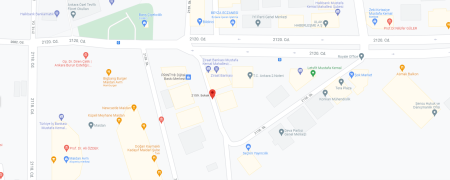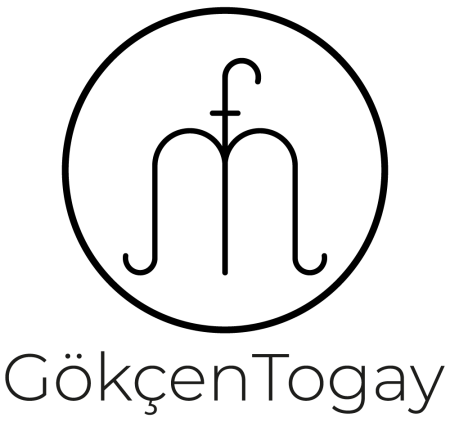The motifs and materials used in handicrafts are, according to some, interest, according to others, passion and liking. The problem of the masters is different: To keep the Anatolian handicrafts that have a history of hundreds of years alive, to revive the lines that are about to be erased with new designs… Designers emphasize the need for knowledge in handicraft production, which has gained momentum in recent years. To know the traditions and values of the Anatolian people; making sense of the motifs reflected even on carpets, rugs and prayer rugs and interpreting the colors and feelings that add value to life are forming the basis of this knowledge.
Inspiration Source
By inspiring from the Anatolian's lace, rug and carpet motifs, hair braiding styles, and old coins and medallions, new derivatives can be created for objects. Apart from the main materials listed above, it is seen that silver and glass, aluminum foils, horn and thick leather are also used.
Fields in which it is valid
Handicrafts; can be used anywhere. In fact, all kinds of handicrafts, which find a wide area for themselves, appear even in colored stones decorated with geometric patterns.
It is always possible to increase the value of the object, which is produced with handicraft and eyestrain, with mother-of-pearl, pearl and silver coatings. Today, we know an artist who has transformed such a narrative into a way that will appeal to the eye form: Gökçen Togay...
Who is the artist Gökçen?
The artist, who was born in Ankara in 1973, graduated from Ankara Advanced Technical Institute Fashion Design Department and completed her undergraduate education in Gazi University Faculty of Non-formal Education Traditional Turkish Handicrafts Department, and completed her master's degree in Gazi University, Educational Sciences Institute, Traditional Turkish Handicraft Education Science department.
The artist worked as a stylist in the private sector and had made apparel production in her own workshop. She still teaches "Fashion Design" at the Private Maya College.
Some of her exhibitions
• Group exhibitions
- Traditional Turkish Handicrafts Exhibition (Ministry of Culture Exhibition Hall - 2002)
- 8 March International Women's Day Group Exhibition - 2017
- Felt Art Exhibition in cooperation with Ankara Development Agency and ATO - 2.6.2013
- March 8 International Women's Day Mixed Exhibition Maya College Exhibition Hall - 8.3.2019
• Solo exhibitions
- Exhibition titled as "Adding Life to the Traditional", Next Level Shopping Mall Exhibition Hall / Ankara - 21.09.2018
- Exhibition titled as "Traditional Turkish Handicrafts", B & T Exhibition Hall 27.11.2018
- Exhibition titled as "From the Footsteps of the Tradition" - İstanbul Anatolian Courthouse, Şehit Mehmet Selim
Kiraz Hall 25 March - 5 April 2019
- The exhibition titled as "The Silent Language of the Roots" / Hünkâr Pavilion / İstanbul 03.09.2019 / 10.09.2019
About the exhibition
Traditional Turkish Handicrafts, which have a deep-rooted history in terms of history and culture, shows diversity. A selection of Traditional Turkish Handicrafts was presented in the exhibition. Works related to felt, marbling, calligraphy, knitting, leather forging, the art of kat'ı, weaving, meerschaum carving were carried out. The materials, cultural elements and subject choices used in the works are important in terms of shedding light on our past and Traditional Turkish Handicrafts.
Part of the art works were taken from a book named "With the Engravings, Turkey" (T.R. Ministry of Culture, Ankara-1996). Foreign observers who have visited the Ottoman Empire since the 16th century have drawn pictures to convey what they saw and experienced in this geography to people in their own countries. Reflecting the Ottoman daily life, these paintings were worked on with the technique of leather forging and metal forging. The other part of the exhibition consists of original works created by the artist using different materials and different Turkish Handicraft techniques. We asked, Ms. Gökçen gave answers:
Lady, we have visited many exhibitions so far; but this is the first time we see such embroideries on leather, leaves and aluminum foil. Could you briefly tell us about the technique of these works?
Gökçen Lady said, "With pleasure", and she entered into the word.
Making picture on leather
Products made from leather emerged at the time of the Huns and have survived to the present day. It is a very well-established art branch. This painting is made on calfskin with a thickness of 4 mm. It requires a lot of precision to be made. First, I draw the picture I want to work on the calfskin.
Then I go over the line with my special knife with a thin tip. When this process is finished, I open the cuts on the leather with another special tool to both sides in a way that provides a small gap in order to better forge the cuts.
I am slightly wetting the leather. This process provides softness to the leather. I have steel tools that are ten cm long and with different tips. Keeping the tool required by the picture lines in an upright position, I forge the cut parts of the patterns from the inside.
… If the leather is not forged with appropriate rhythms, it will not give the desired feature… After completing the work, I color it with leather paint and fix the paint with leather polish. However, in my works, I generally prefer only shading with paint rather than coloring, because the natural state of the leather is more impressive for me.
Embroidery on the leaves
Another object being studied on is a plane leaf falling from a tree. The leaf needs to be wiped very cleanly and dried between books before entering the marbling. It is important that it does not contain dust.
I prepare the marbling vat and dip the leaf in the vat… I varnish it with matte spray varnish; because the sheet is not like paper, it does not absorb the paint… I am fixing the colors in a form. Then I glue it onto the paper by using glue…
The Story of the Mirror
… In the Ottoman period, presenting a mirror to a lover meant "I couldn't find a better gift for you than you are". Based on this sense of humor, the artist adorned the edges of the mirrors with the handiwork and brilliance of Anatolian women, and added beauty with the lace she produced by adorning them with handicrafts. Traditional flannel fabric, felt and bone were also used on the edges of the mirrors in the exhibition… Another striking feature in the exhibition is the “the Story of the Horn”.
We congratulate and thank Ms. Gökçen, who gave life to very interesting designs. As she talked, we became integrated with the subject as if we were applying the technique… How lucky we were with this exhibition designed in Ankara and presented in Istanbul!
The history of these beauties exhibited in Eminönü Hünkar Pavilion had ended on September 11, 2019. Now let's regret how unlucky we were!



